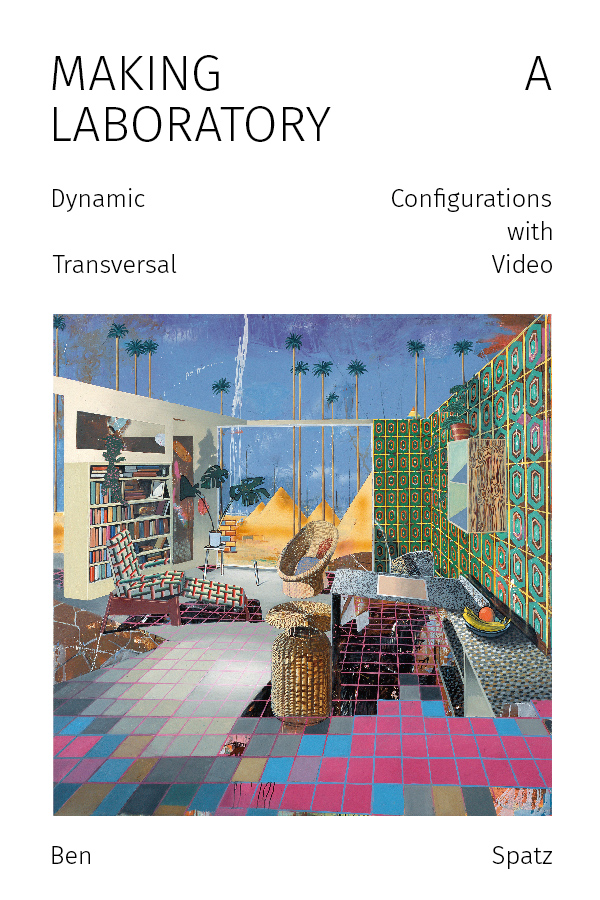Two Cuts by Ben Spatz

About the author:
“nonbinary practitioner and theorist of embodied research: earthing the laboratory — queer prophetic — decolonizing embodiment — molecular identities”
Ben Spatz is a nonbinary researcher and theorist of embodied practice. They are Reader in Media and Performance at University of Huddersfield (UK) and author of three books: What a Body Can Do (Routledge 2015), Blue Sky Body (Routledge 2020), and Making a Laboratory (Punctum 2020). Ben is founding editor of the videographic Journal of Embodied Researcher and a leader in the development of embodied research methods. Their work has been presented at more than thirty institutions in seventeen countries. For more information, please visit the Urban Research Theater website.
Embodied Research
“Research is a kind of search. The “re” indicates not just repetition but intensity and thoroughness. To research is not merely to look for something but to conduct a focused and systematic investigation. Research is a balancing act, poised on an edge between the specific and the general, the concrete and the abstract, the repeatable and the unique. It can be figured as a kind of art, or even a dance, and in the examples considered here that is more than a metaphor. There is craft in research, and artistry. To be a researcher is to trace a new and narrow path. To find something new, one must be willing to encounter the unknown. But the unknown of research is not the unknown of everyday life. If I do not know your name, and I ask you for it, that is hardly research, even though I learn something I did not know before.”
“The question asked by embodied research is: What can bodies do?”
“Embodied research asks questions like: What can voices do? What can fingers do? What can bodily rhythms do? What can sensitive listening do? What can unison movement do? What can storytelling and role-playing do? What can precise skeletal alignment do? What can intensive daily training do? What can aerobic exercise do? What can relaxation and meditation do? Technology may be involved in the measurement of embodied research, the writing down of relevant ideas, and the dissemination of results. But the research itself, the processes and practices of repetition and discovery, are embodied.”
–Embodied Research a methodology by Ben Spatz
Dynamic Configurations with Transversal Video
Book description:
“Making a Laboratory defines a new audiovisual embodied research method that short-circuits experimental practice and video recording to generate new kinds of data and documents. Overturning conventional hierarchies of knowledge, “Dynamic Configurations with Transversal Video” (DCTV) grounds both discursive and audiovisual knowledges within the space of embodied practice, synthesizing insights from historical epistemologist Hans-Jörg Rheinberger and philosopher of science Karen Barad to offer the first rigorous definition of laboratoriality outside a techno-scientific paradigm. In this concise book, nonbinary practitioner-researcher Ben Spatz situates the DCTV method in the context of artistic research and alongside emerging audiovisual methods in other fields, while highlighting its unique characteristics.”
Primary inspiration – Scholar’s whose research is focused on method building for defining “laboratories” & “experiments”:
Jerzy Grotowski’s “Poor Theater”
“The boundary between the “object of observation” and the “agencies of observation” is indeterminate in the absence of a specific physical arrangement of the apparatus. What constitutes the object of observation and what constitutes the agencies of observation are determinable only on the condition that the measurement apparatus is specified. The apparatus enacts a cut delineating the object from the agencies of observation. Clearly, then, as we have noted, observations do not refer to properties of observation-independent objects.” (Barad 2007: 114, italics removed)
&
Hans-Jörg Rheinberger‘s work on “experimental practice”
Two Cuts
Technical “what is known”
&
Epistemic “what is beyond imagination”
“the cut is always two cuts, or better, two sets of cuts. These occur simultaneously but have different epistemic positions, one instigating the experimental event and the other measuring it.” p. 29
“A single cut would be like a scientist who slips a slide into the microscope and then refrains from peering through the lens, or who takes a detailed reading of an empty chamber into which nothing of interest has been inserted.” p.29
“the experimental cut is always two cuts: a cut that specifies conditions for something to happen and a cut that derives traces from what happens.” p. 30
“An experiment becomes a laboratory when both cuts are traced or inscribed archivally, so that those not present can have mediated access to both “what was done” (the opening cut) and “what happened” (the closing cut).” p. 33
“I offer three definitions: Experimentality is any kind of “trying out” (opening cut) coupled with observation (closing cut). Laboratoriality, or inscriptive experimentality, requires that both the “trying out” and the observation be archivally traced.” p.33
“”the word science derives from the Latin scientia, ‘to separate one thing from another,’ which is related to the lndo-European root skei, ‘to cut, split”‘ (Schneider 1997: 203n4),” p. 35
“If scholarly institutions of knowledge are founded on particular relations with archives, rather than specifically on the medium of writing-by which I mean all forms of numerical, textual, and musical notation-then the advent of audiovisual research stands to radically transform the university and perhaps knowledge itself. At issue here is not only the forms that research can be understood to take, but also who can be recognized as conducting research and what can be counted as knowledge.” p. 35-36
